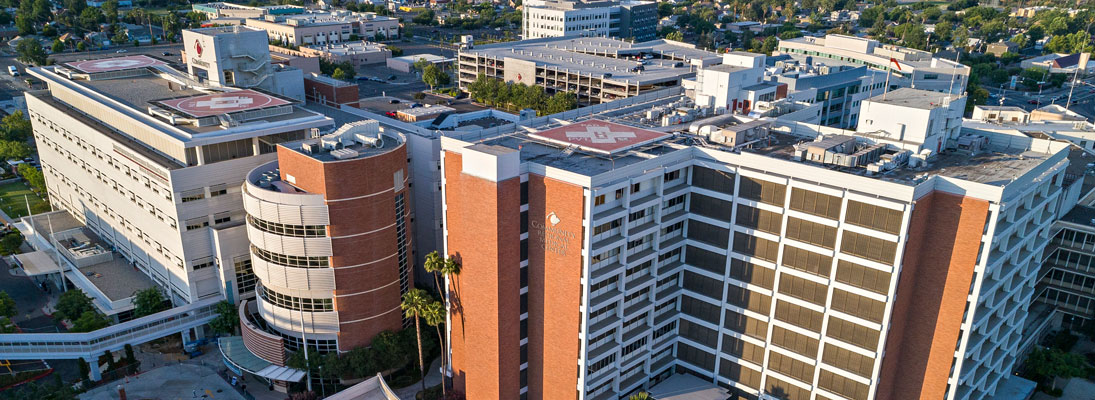
Diagnostic procedures performed at Community Regional Medical Center include:
Coronary Angiography
Uses a special contrast dye injected through a catheter into a blood vessel in the thigh. The dye shows up in X-ray and indicates if and where there is a narrowing or blockage in the coronary artery.
Peripheral Angiogram
Provides a map of the patient’s vascular system to discover if and where a narrowing or blockage exists in an artery. It’s most often used to determine if a patient has peripheral artery disease.
Echocardiography
Is a painless test that uses sound waves to create images of the heart. It provides the doctor with information about how well the heart’s chambers and valves are working.
- Transthoracic Echocardiogram is a painless and noninvasive procedure where a device called a transducer is placed on your chest and sends ultrasound through to your heart. As the ultrasound waves bounce off the structures of your heart, a computer in the echocardiography machine converts them into images on a screen.
- Transesophageal Echocardiogram is a test where the transducer is attached to the end of a flexible tube that's guided down your throat and into your esophagus to get a more detailed image of your heart.
- 3-D Real-Time Echocardiogram uses ultrasound to create an accurate three-dimensional visualization of the heart’s structure in real time.
Electrocardiogram (ECG or EKG)
Is a test that records the electrical activity of the heartbeat to find out if the heartbeat is normal or irregular (either slow or fast) It can also help doctors determine if the heart is too large or working too hard. The test is noninvasive, using electrode pads placed on the chest for only a few minutes.
Cardiac CT
Is a painless X-ray that creates detailed pictures of your heart. A special dye may be injected during the test to highlight the important structures in your heart. This test can be used to identify blockages within your heart, as well as structural abnormalities.Cardiac MRI
Uses magnets, radio waves and a computer to produce 2-D or 3-D pictures of your heart. The test provides a very accurate assessment of your heart’s structure and function. With the injection of a special dye, information can be obtained about the major vessels that supply blood to your heart.Stress Echocardiography
Is an echocardiogram taken while a patient exercises or receives medicine through an IV to make the heart pump harder and beat faster.Nuclear Stress Testing
Is used when a patient has an abnormal resting ECG result or is unable to walk safely. A dye with a nuclear isotope is used to enhance the image of the echocardiogram. The patient will be given the dye shortly before receiving IV medication to stimulate the heart and simulate exercise. Being able to visualize the relative amounts of radioactive isotope within the heart muscle makes nuclear stress tests more accurate in detecting regional areas of decreased blood flow. Though the medicine is radioactive, it’s still safe for patients. However, pregnant women should avoid the test because of potential risk to the child.
We use cookies and other tools to optimize and enhance your experience on our website. View our Privacy Policy.
